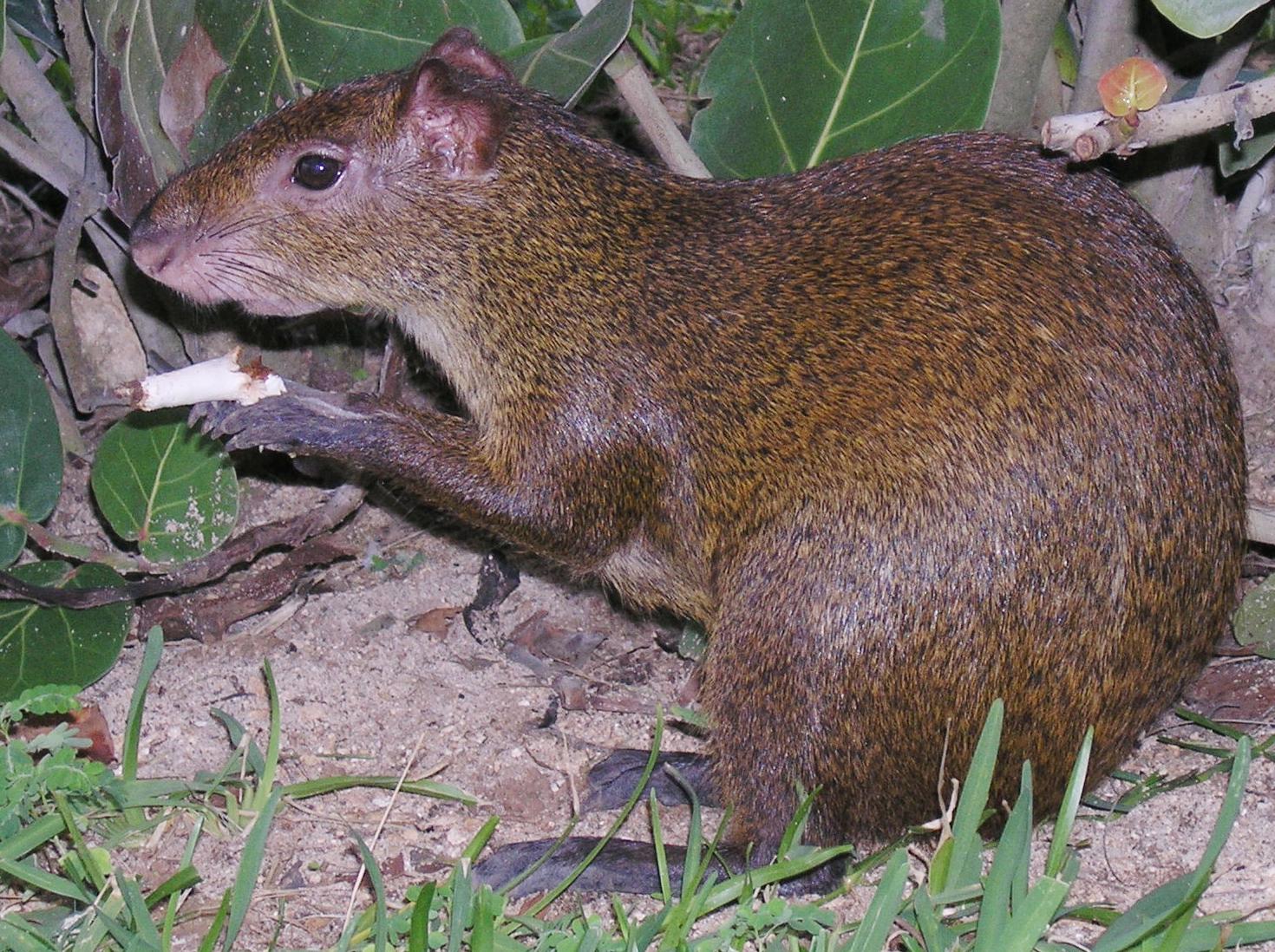
Common agouti(Dasyprocta aguti)
Phylum —chordata
Class — mammalia
Order — rodentia
Family — dasyproctidae
Genus – dasyprocta
Appearance
Externally, these animals resemble large short-eared rabbits with a round back and very thin, fragile-looking legs. Body length from 40 to 64 cm. The color is golden-brown or reddish.
Habitat
They are native to Middle America, northern and central South America, and the southern Lesser Antilles.
Behavior
It is able to climb a leaning tree for fruit. It can swim, excellently jumps (jumps 6 m from a place). It hides in the hollows of trunks and stumps, in holes under the roots or in the burrows of other animals. It lives in pairs or small flocks.
Diet
These animals eat fallen fruit, leaves and roots, although they may sometimes climb trees to eat green fruit.
Reproduction
Agoutis give birth to litters of two to four young after a gestation period of three months. Young are born into burrows lined with leaves, roots and hair. They are well developed at birth and may be up and eating within an hour. Fathers are barred from the nest while the young are very small, but the parents pair bond for the rest of their lives.
They can live for as long as 20 years.
Incaptivity
Despite its extreme timidity, the animal lives well in captivity and over time becomes more trusting.
To keep an agouti, you need a large aviary for walking, which would necessarily have a huge bush and a clean pond. For wintering, a warm house is made.
In captivity, agoutis are fed large-sized pellets for rodents containing vitamins and minerals, fruits and vegetables. Once a week it is worth giving the same protein food: raw meat, lizards and insects.
 Russian
Russian
 English
English
























